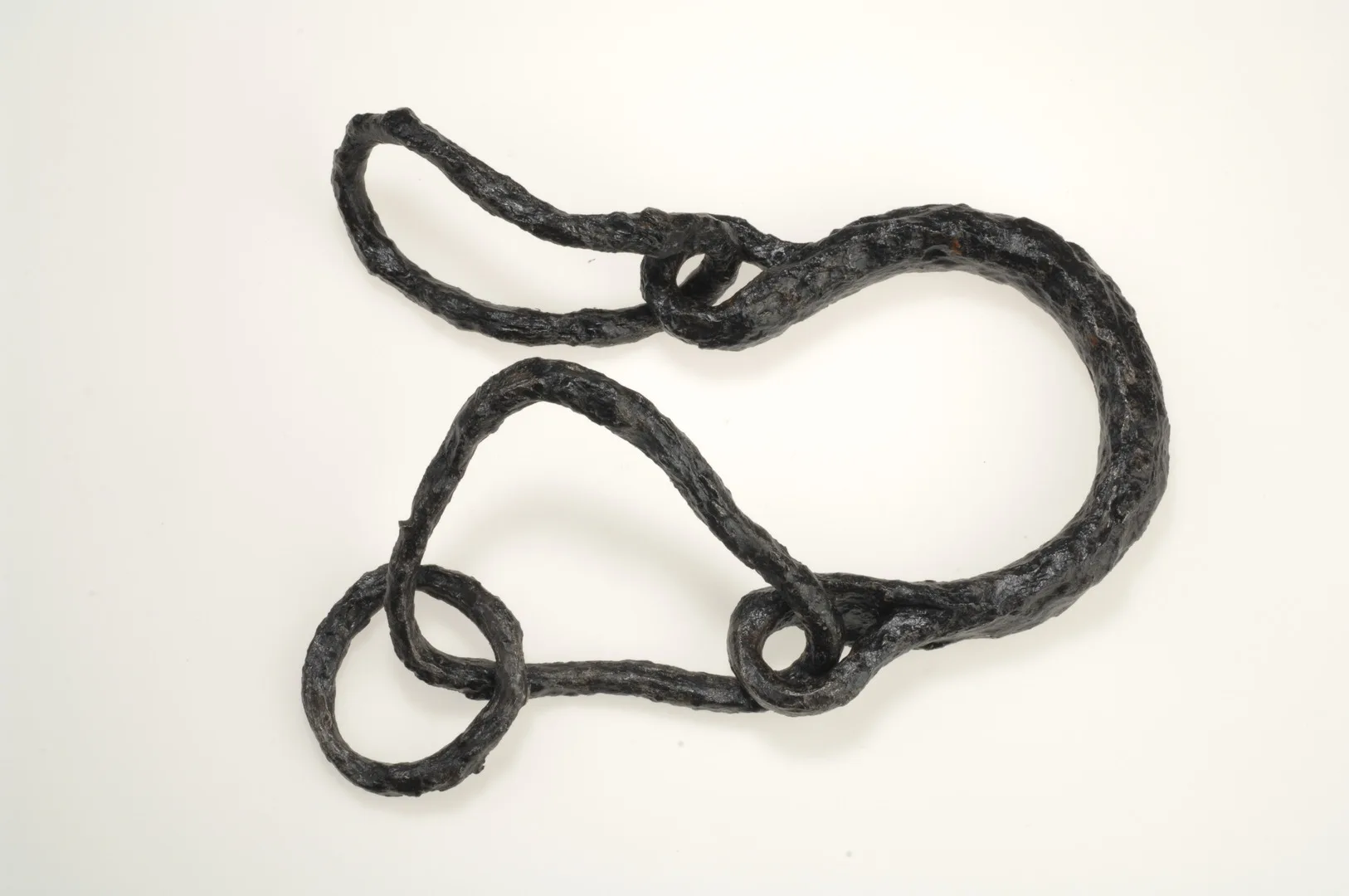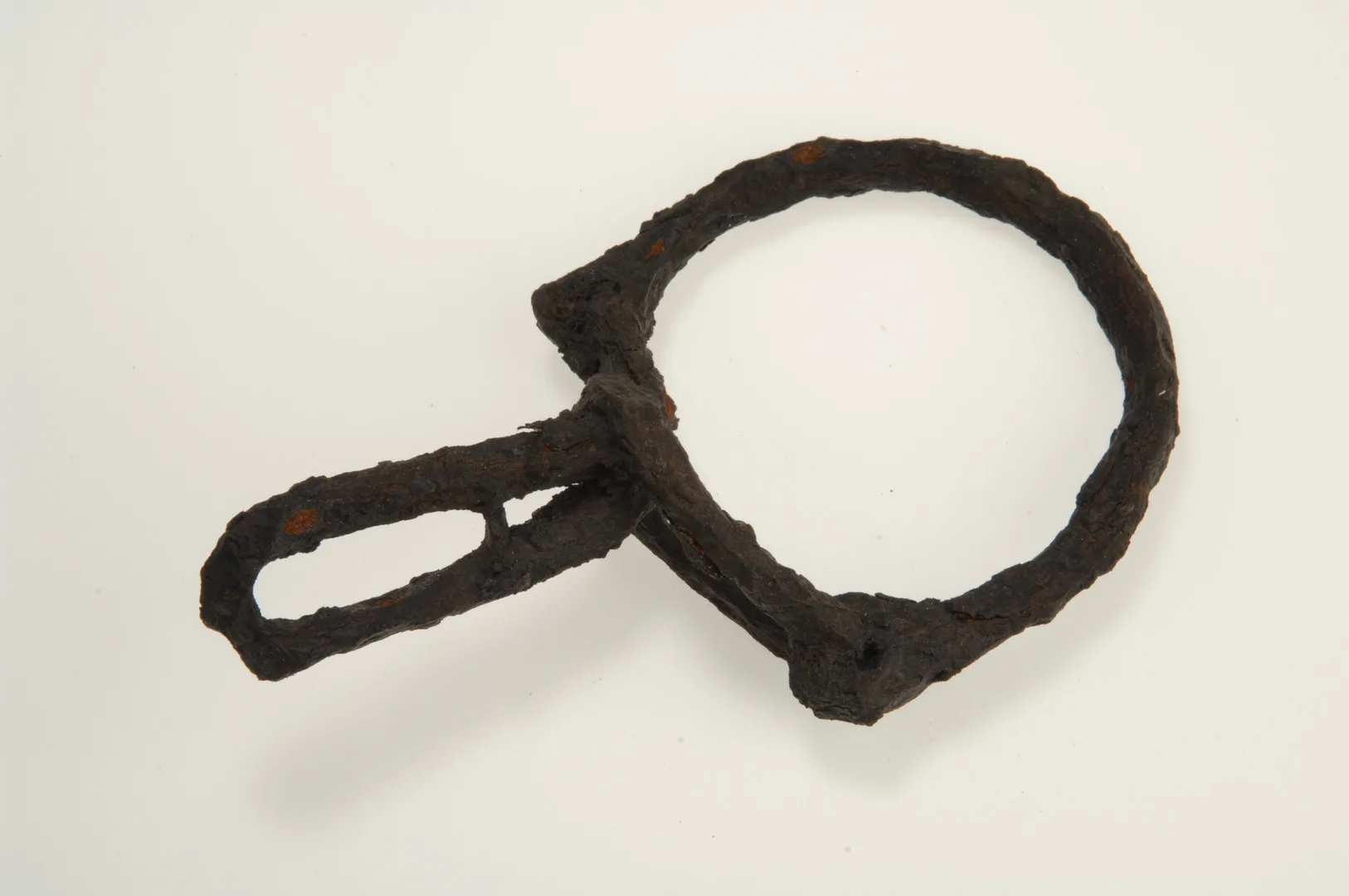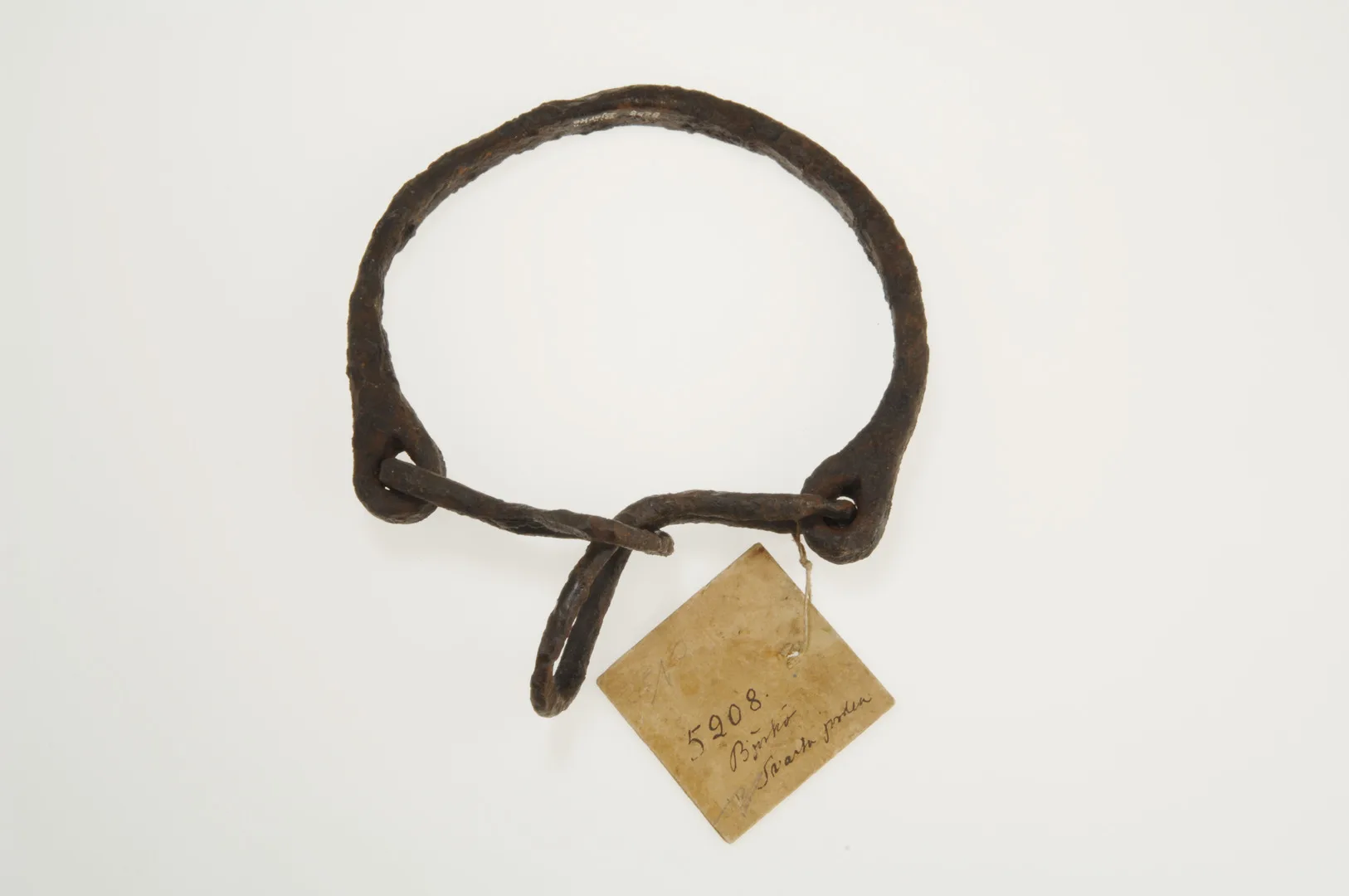Free and Unfree in the Viking Age
Depictions of thralls in the sagas are highly stereotypical, portraying them as dark-skinned, ugly, and foolish “creatures”. The work they performed was heavy: repairing fences, fertilising fields, herding pigs and sheep, and cutting turf.

Irons
Slave irons found at Skedala, Halland.
On view at Historiska museet in the exhibition Vikingarnas världFind this object in display 09, Vikingarnas värld Monter 09
A Stranger at Risk of Becoming a Thrall
Viking Age society was largely an agrarian one, composed of free farmers. Belonging to a family and a local community was crucial for one’s social position. Those who ventured outside their local society, and the laws that applied there, risked losing their freedom – and in the worst case, their lives. In foreign territories, it was therefore essential to ally oneself with a protector.
Written sources attest that thralls were captured by Norsemen during raids and sold to Europe, the Byzantine Empire, and the Islamic world. Important centres for the slave trade included Regensburg, Prague, Venice, Constantinople, and Alexandria.
Viking towns themselves functioned not only as trading and production centres, but also as slave markets. In Hedeby, in what is now northern Germany, Rimbert, Archbishop of Bremen, witnessed “a large group of Christian captives in chains”. He managed to ransom a nun in exchange for his horse. Similarly, Birka is mentioned as having “many Christian captives” present.
Thrallship in the Nordic countries during the Viking Age seems to have differed in some respects from, for example, slavery in antiquity. Even a free person could voluntarily enter temporary thrallship to another due to poverty or to settle a debt. As a warrior, one could give up personal freedom by oath to join the king’s household troop, and as a thrall one could rise to become the king’s representative.

Irons
Slave irons found at Birka, Uppland.
On view at Historiska museet in the exhibition Vikingarnas världFind this object in display 09, Vikingarnas värld Monter 09
Traces Left by Thralls
The proportion of thralls in Viking Age society is difficult to estimate, and archaeological traces of the slave trade are rare. Existing traces consist of occasional finds of collars, shackles, or iron fetters used to restrain people. However, the iron used in the shackles was a valuable resource, and thralls could just as easily have been chained with simple ropes, which rarely survive.
In some graves with two interments, so-called double graves, there is sometimes suspicion that a thrall was allowed to accompany their owner in death. Evidence of such a cruel practice is found in the account of the Arab traveller Ibn Fadlan along the Volga River.
According to his narrative, he witnessed a burial among a group of Rus, probably Norsemen on a journey. During the funeral of one of the group’s leaders, a thrall was drugged and raped, then killed and buried with their master in a boat.
A very large number of Islamic silver coins, known as dirhams, have been found in Viking Age contexts in Scandinavia. These may partly reflect the extensive slave trade with the Islamic world.

Neck Iron
Neck iron found at Birka, Uppland.
On view at Historiska museet in the exhibition Vikingarnas världFind this object in display 09, Vikingarnas värld Monter 09



